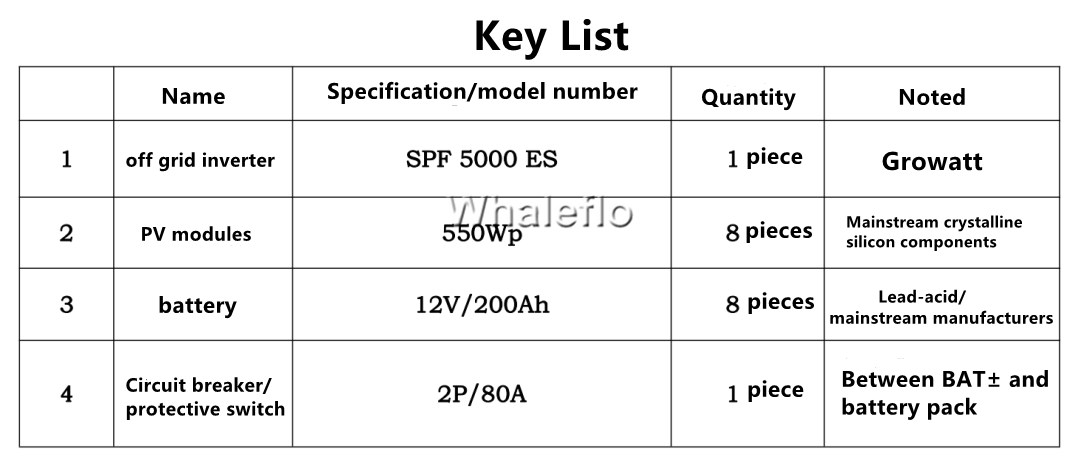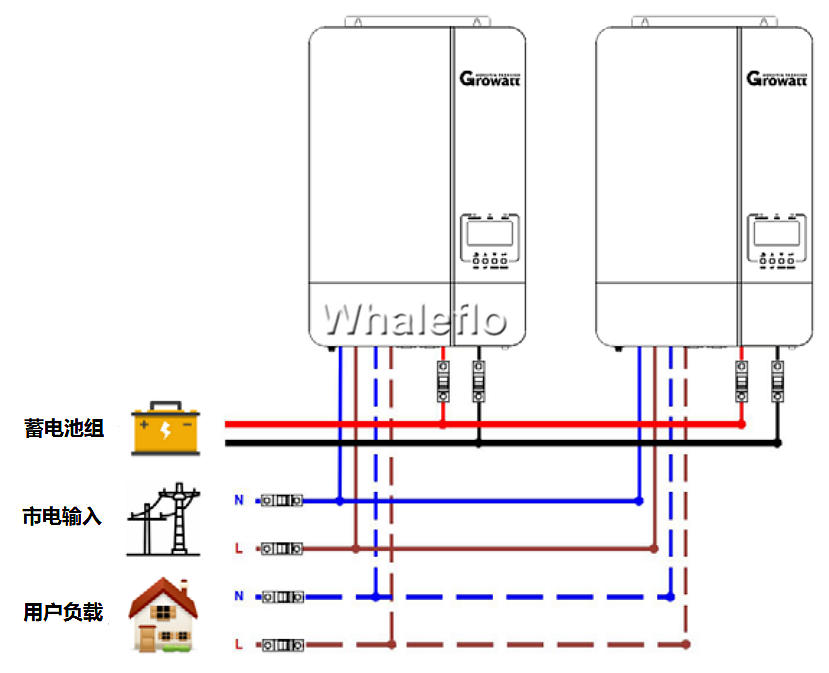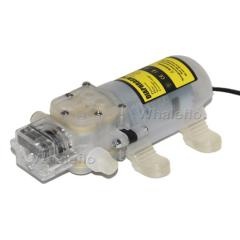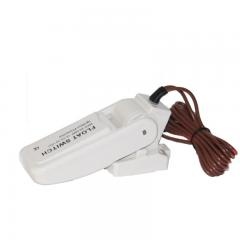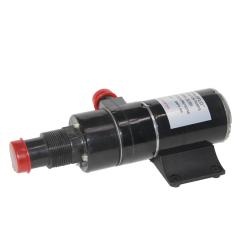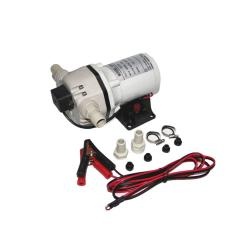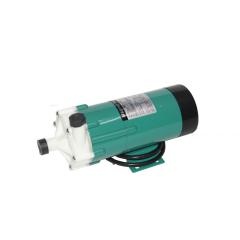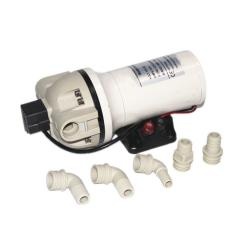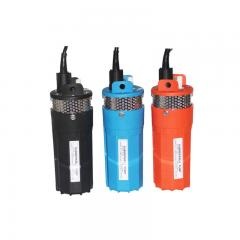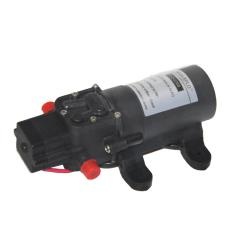This article hopes to let everyone know how to successfully build a photovoltaic off-grid power station through simple and plain language.
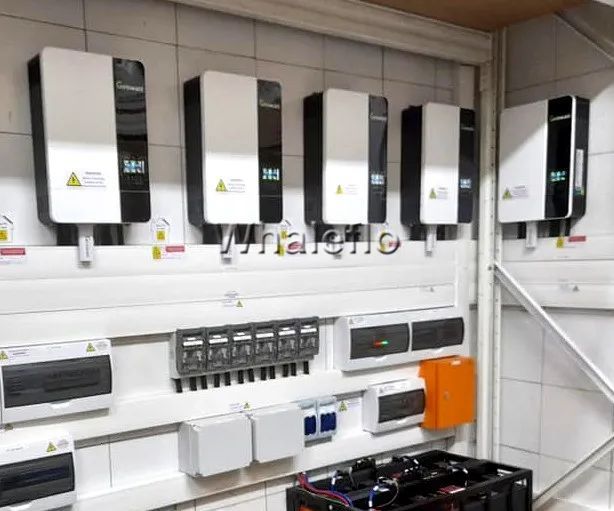
1. The value of off-grid systems
From a long-term summary, the off-grid system is mainly based on the following starting points:
(1) Places where there is no way to use mains electricity (grid), such as mountains, boats, cars, and the wild. This is the most typical off-grid system requirement; more than 80% of users want to achieve power supply through off-grid systems because it is inconvenient to use mains electricity.
(2) Areas where there is mains electricity, but irregular power outages often occur. When there is a power outage, the photovoltaic off-grid system can continue to supply the load to meet the continuous power demand.
(3) There is mains electricity, but it is hoped that the electricity bill can be reduced through the off-grid system. The off-grid system can not only charge the battery through photovoltaic modules, but also charge the battery by setting the utility power when the rate is low, and then supply the load by discharging the battery when the rate is high.
2. Typical off-grid system composition
Off-grid system diagram
The above figure is the composition diagram of a typical off-grid system. A few things to note:
(1) Off-grid system means that the system output does not need to be connected to the mains grid like a grid-connected photovoltaic system. The output of an off-grid system is what supplies the load.
(2) The off-grid system provides the V-F source, which is equivalent to the role of a power grid.
(3) The main equipment in the off-grid system are: photovoltaic modules, off-grid inverters, battery packs, confluence devices, distribution boxes, and electrical loads.
(4) The most streamlined off-grid system can only contain two parts: off-grid inverter and battery pack.
/3, Off-grid system design process
(1) It is a "tailor-made" process to confirm the demand for an off-grid system, because in most cases the loads that different users need to bring are the same, and the duration of electricity consumption is different. The correct way is to first confirm the requirements: what loads will be brought? How big is the load? How long do you use it in a day? Then figure out how big a system needs to be built. For example, a customer in North China needs to build an off-grid power station, the main load is a 3500W blower, the power consumption is 3 hours a day, and the backup power needs only 1 day. From this information, the power of the load is 3.5KW, and the power consumption per day is 10.5kWh.
(2) Off-grid machine selection The early off-grid system control part is performed by MPPT controller + DC/AC converter. With the development of technology, mainstream manufacturers currently advocate the use of control and inverter integrated machines, and one device can be used at the same time. Implement functions such as Growatt's SPF ES series of off-grid inverters.
After confirming the needs, it is time to choose the appropriate off-grid inverter. The output of the selected off-grid machine must be able to cover the rated power of the load, and try to leave some margin in order to make the system more reliable. Take the load in the above figure as an example, the rated power is 3.5kW, and the SPF 5000 ES off-grid machine can be selected, and the output power is 5kW, which can meet the power supply of this load.
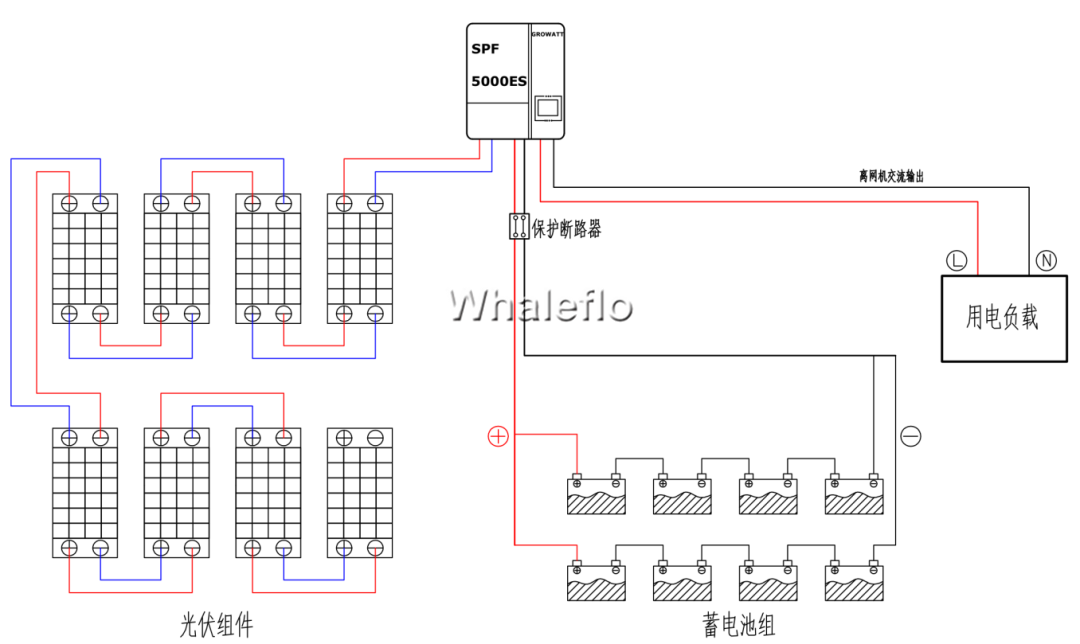

Under the premise of covering the load power, how many inverters are needed depends on the backup power demand, which is the so-called "continuous rainy days". Because the electricity in the off-grid system is generated by the components and the off-grid machine, if the demand for backup power is large, one off-grid machine and its matched components may not be able to generate it, so it needs to be doubled.
(3) The selection of photovoltaic modules As long as it is a photovoltaic system, the energy source is photovoltaic modules (of course, the off-grid system also has commercial power as the input). The selected off-grid machine has its set acceptable component capacity, and the components can be configured directly according to the specifications of the off-grid machine. Using the current mainstream 182 components of 550Wp*8, the rated power is 4.4kWp, and the average daily power generation is about 16kWh. It can also be top-matched or even a little bit over-matched, and it needs to be matched according to specific needs.
The series-parallel mode of the components is actually the same as the principle of the grid-connected inverter. The string of the off-grid machine has the maximum allowable access voltage value, which can be connected in series according to the parameters of the selected components. The maximum PV input voltage of the SPF 5000ES off-grid machine is 450V, and the MPPT voltage range is 120V~430V. If 550Wp components are selected, the general open circuit voltage is about 49V, and you can directly press 8 pieces and 1 string to connect to the PV input port of the off-grid machine. .
(4) Battery selection The battery is a major feature of the off-grid system that is different from the grid-connected system. It is the buffer adjustment zone of the system, otherwise the system will become an island.
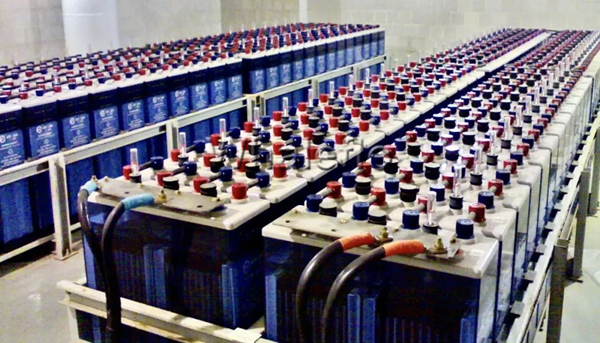
When choosing a battery, it is still based on the user's electricity demand. Judging from the above example, the customer has a backup power demand of 10.5kWh, that is to say, if there is no light, the battery needs to release 10.5 kWh of electricity through the off-grid machine to meet the load supply.
However, regardless of lead-acid batteries or lithium-ion batteries, there is a concept or characteristic of depth of discharge (DoD=Depth of Discharge), which must be taken into account. That is to say, the electricity stored in the battery cannot be completely released every time, only a part of it can be released, otherwise it will cause damage to the battery and cause the battery to fail prematurely.
The depth of discharge of general lead-acid batteries is about 60%, while that of lithium batteries can reach 90%. When choosing the capacity of the battery pack, the depth of discharge also affects the total capacity of the battery pack. Still taking the above example, choose a lead-acid battery, 10.5 kWh is calculated according to the depth of discharge of 60%, and a total of 10.5kWh ÷ 0.6=17.5kWh battery packs need to be configured. These batteries are like a container to store the electricity emitted by the system. up and release when the load requires it.
There is no need to calculate the capacity or specification of a single battery so complicatedly. The 5kW off-grid machine requires the battery to be configured with a specification of 200Ah or more. Knowing this, you only need to adjust the number to allocate the same or close to the total battery capacity.
At present, the main lead-acid battery specifications on the market are 2V/6V/12V. Generally, if the 12V specification is selected, the capacity of a battery is 12V*200Ah=2400VAh=2.4kWh, and the total capacity of 17.5kWh is divided by 1 battery. The capacity is the number of battery blocks that need to be configured, 17.5kWh÷2.4kWh=7.2916..., the battery is indivisible, round up, and configure 8 blocks. You can come back and verify, 8 blocks*12V*200Ah=19200VAh=19.2kWh, which meets the load backup power requirement.
(5) List of main equipment The list of generally configured off-grid systems is as follows:
(6) When multiple parallel machines are required
There are two situations where multiple parallel machines are required:
(1) Although the load is not large, one off-grid machine is available, but the demand for backup power is large.
(2) The power of the load exceeds the rated output power of one off-grid machine.
SPF 5000ES off-grid machine supports 2~6 parallel machines, and the system can achieve 10kW~30kW output. After the number of off-grid machines is increased, the components also need to be increased accordingly, especially for systems with large backup power requirements, it is not enough to only configure a battery pack with a suitable capacity, and only enough components can generate electricity and store electricity.
